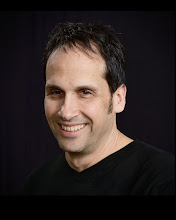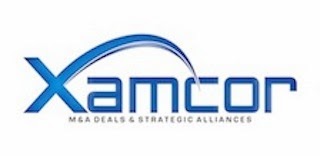Kodak is making money, but apparently it's not enough. Sales shrunk by 5%, but the Rochester-based imaging giant raised profits almost three times to $96 million this quarter. (I'd take that.) However, Kodak also warned that it's year-end profits would be in the $200-250 million dollar range, after last quarter projecting the profit to be $400 million. I hope no one received bonuses based on those projections, which probablyl inflated the stock at the time.
Same story regarding digital vs. film. Revenue from digital business grew 2%, while film-based revenue dropped 18%. Kodak's digital sales are how more than twice as great as its film-based sales - $1.64 billion to $764 million.
Directly related to our industry, "Graphic communications sales fell 2 percent to $821 million and operating earnings fell from $36 million to $23 million, hurt mainly by a softer commercial printing market in the United States as well as higher raw materials costs than a year ago." - Nothing negative about the document scanner business, which is good.
Thursday, October 30, 2008
Thursday, October 23, 2008
Voting Machines and Fraud
Saw a fascinating movie last night that detailed some of the potential fraud that can be committed with electronic voting machines. I've actually been writing about this in DIR, since the wake of the disastrous 2000 election. By "disastrous," I don't necessarily mean the outcome (we'll leave that debate for the political bloggers). I mean the way the votes were counted, especially in Florida.
If you remember, all the hanging chads and the problems with the punch cards, prompted this vast movement toward electronic voting machines. Problem is, most of these machines intially, at least, had no paper trails. So, you were literally casting your vote into a "black box" and assuming it was gooing to come out the right way on the other side.
Well, this movie I saw last night, Uncounted, detailed some of the ways these machines can easily be hacked and the votes flipped. Meaning that if Candidate A received 200 votes and Candidate B received 100, it only takes about 20 lines of code written on a memory card, inserted into a fairly easily accessible memory slot, to flip the vote so it appears Candidate A had 100 votes and Candidate B had 200. There are other things you can do as well.
I'm not going to get into all the evidence the movie presented that this vote flipping has probably been done several times in the past eight years - as these people may have been just a bunch of liberal, conspiracy-theory crackpots- they were mainly academics, activists, and journalists - but there were some conservatives represented as well. My point is not to argue whether or not this stuff has been done - it's merely to ask why the $#%& are we designing systems with these types of potential flaws?
I mean, we all work in the ECM industry. We know all about security, auditability, records management, etc., yet none of this technology is being implemented in one of the most important business processes related to properly running our country. Why is this? Have we fallen down on the job? Has there been a deliberate conspiracy to keep ECM technology out of the voting process.
Any opinions on this are appreciated.
Ralph
If you remember, all the hanging chads and the problems with the punch cards, prompted this vast movement toward electronic voting machines. Problem is, most of these machines intially, at least, had no paper trails. So, you were literally casting your vote into a "black box" and assuming it was gooing to come out the right way on the other side.
Well, this movie I saw last night, Uncounted, detailed some of the ways these machines can easily be hacked and the votes flipped. Meaning that if Candidate A received 200 votes and Candidate B received 100, it only takes about 20 lines of code written on a memory card, inserted into a fairly easily accessible memory slot, to flip the vote so it appears Candidate A had 100 votes and Candidate B had 200. There are other things you can do as well.
I'm not going to get into all the evidence the movie presented that this vote flipping has probably been done several times in the past eight years - as these people may have been just a bunch of liberal, conspiracy-theory crackpots- they were mainly academics, activists, and journalists - but there were some conservatives represented as well. My point is not to argue whether or not this stuff has been done - it's merely to ask why the $#%& are we designing systems with these types of potential flaws?
I mean, we all work in the ECM industry. We know all about security, auditability, records management, etc., yet none of this technology is being implemented in one of the most important business processes related to properly running our country. Why is this? Have we fallen down on the job? Has there been a deliberate conspiracy to keep ECM technology out of the voting process.
Any opinions on this are appreciated.
Ralph
Wednesday, October 22, 2008
Monday, October 13, 2008
More Distributed Capture
As distributed capture is becoming an increasingly hot topic, I attended a couple presentations on it at the recent Kofax Transform event in Austin. Kofax has a pretty heavy duty distributed capture model for its traditional Ascent Capture, now Kofax Capture environment. This has both up- and down-sides. The upside is that you get plenty of functionality in areas like security and automated data capture. The downside is the administration required to support thick clients at each distributed site.
Kofax also has an interesting pricing model for its recently renamed Kofax Capture Network Server (KCNS). (That' s the product fomerly known as ACIS - Ascent Capture Internet Server). It lists for $2,200 per seat, whether it's being deployed as the centralized server or as a client. This is the same price as Kofax Capture. There is also volume-based licensing on top of the seat price. This could obviously get pretty expensive if you're rolling out a big application, especially if you have light volume at some of the distributed sites....
Which is what Kofax's Document Exchange Server (DES) is designed to address. This is Kofax's server-based capture platform designed to run in conjunction with MFPs. HP seems to be their major partner in rolling out DES, which we presume can be used to feed a KCNS server implementation. It's this type of hybrid environment that we think will dominate the capture landscape five to 10 years in the future.
One more distributed capture note. I recently authored a white paper Web-based capture for Oracle - which last year acquired Captovation - one of pioneers in Web-based distributed capture.
Kofax also has an interesting pricing model for its recently renamed Kofax Capture Network Server (KCNS). (That' s the product fomerly known as ACIS - Ascent Capture Internet Server). It lists for $2,200 per seat, whether it's being deployed as the centralized server or as a client. This is the same price as Kofax Capture. There is also volume-based licensing on top of the seat price. This could obviously get pretty expensive if you're rolling out a big application, especially if you have light volume at some of the distributed sites....
Which is what Kofax's Document Exchange Server (DES) is designed to address. This is Kofax's server-based capture platform designed to run in conjunction with MFPs. HP seems to be their major partner in rolling out DES, which we presume can be used to feed a KCNS server implementation. It's this type of hybrid environment that we think will dominate the capture landscape five to 10 years in the future.
One more distributed capture note. I recently authored a white paper Web-based capture for Oracle - which last year acquired Captovation - one of pioneers in Web-based distributed capture.
Subscribe to:
Posts (Atom)



